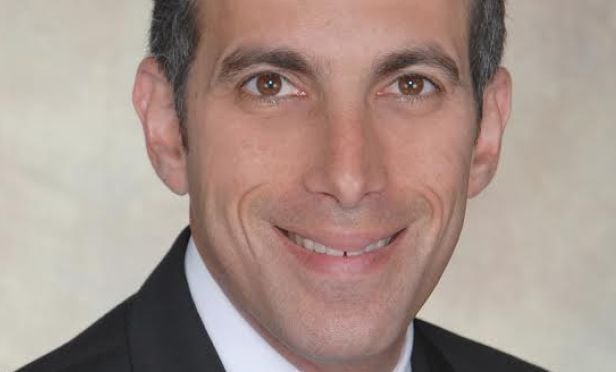
ATLANTA—Fannie Mae and Freddie Mac's small balance loan program has hit a stride over the past year. The program was designed to target areas of the marketplace that lacked liquidity options and focuses on multifamily deals with a mortgage balance from $1 to $5 million.
A combination of non-recourse, higher leverage points—up to 80%—and attractive rates have made the program a hit with buyers. Some capital markets watchers say the small balance loan program is the best financing option for multifamily private investors and the market has appreciated significantly for multifamily since the program's inception.
GlobeSt.com caught up with Darron Kattan and Casey Siggins of Franklin Street to get some insight into these instruments in part one of this exclusive interview. Stay tuned for part two, in which they will discuss the dynamics of securing these loans.
GlobeSt.com: What are the benefits of the Small Balance Loan (SBL) Program?
Kattan: The program was designed to target areas of the marketplace that lacked liquidity options and focuses on multifamily deals with a mortgage balance from $1 million to $5 million. Recently, Freddie Mac has announced they have increased the maximum loan size to $6 million for all multifamily properties and $7.5 million for properties that are 75 units or smaller.
The process and fees were streamlined to make it more user-friendly for the target client base, which is primarily the private client, non-institutional world. Basically, you have a program that offers low-cost execution, competitive pricing, reduced documentation and limited third-party reports. That's difficult to beat.
GlobeSt.com: Are the loans attractive to buyers?
Siggins: Yes, very much so. Due to a combination of non-recourse, higher leverage points—up to 80% and attractive rates, this is clearly the best financing option out there for multifamily private investors.
The only real disadvantage the program has versus a bank loan—which dominated the space prior—is the prepayment penalties for an early payoff. Those penalties are typically based on a yield maintenance calculation and can be quite onerous.
Today, borrowers can avoid the yield maintenance prepayment structure by agreeing to bay a slightly higher interest rate. But for a highly qualified borrower, it's by far the best program available, particularly if they don't plan on selling in the near term. Even if the borrower is not of the highest qualifications, so long as they don't have foreclosures and have the required liquidity, it still offers the best loans around.
How will industry regs impact commercial real estate investment? Get one opinion here. Then find out what one capital markets guru thinks about a possible lending volume decline.

ATLANTA—
A combination of non-recourse, higher leverage points—up to 80%—and attractive rates have made the program a hit with buyers. Some capital markets watchers say the small balance loan program is the best financing option for multifamily private investors and the market has appreciated significantly for multifamily since the program's inception.
GlobeSt.com caught up with Darron Kattan and Casey Siggins of Franklin Street to get some insight into these instruments in part one of this exclusive interview. Stay tuned for part two, in which they will discuss the dynamics of securing these loans.
GlobeSt.com: What are the benefits of the Small Balance Loan (SBL) Program?
Kattan: The program was designed to target areas of the marketplace that lacked liquidity options and focuses on multifamily deals with a mortgage balance from $1 million to $5 million. Recently,
The process and fees were streamlined to make it more user-friendly for the target client base, which is primarily the private client, non-institutional world. Basically, you have a program that offers low-cost execution, competitive pricing, reduced documentation and limited third-party reports. That's difficult to beat.
GlobeSt.com: Are the loans attractive to buyers?
Siggins: Yes, very much so. Due to a combination of non-recourse, higher leverage points—up to 80% and attractive rates, this is clearly the best financing option out there for multifamily private investors.
The only real disadvantage the program has versus a bank loan—which dominated the space prior—is the prepayment penalties for an early payoff. Those penalties are typically based on a yield maintenance calculation and can be quite onerous.
Today, borrowers can avoid the yield maintenance prepayment structure by agreeing to bay a slightly higher interest rate. But for a highly qualified borrower, it's by far the best program available, particularly if they don't plan on selling in the near term. Even if the borrower is not of the highest qualifications, so long as they don't have foreclosures and have the required liquidity, it still offers the best loans around.
How will industry regs impact commercial real estate investment? Get one opinion here. Then find out what one capital markets guru thinks about a possible lending volume decline.
Want to continue reading?
Become a Free ALM Digital Reader.
Once you are an ALM Digital Member, you’ll receive:
- Breaking commercial real estate news and analysis, on-site and via our newsletters and custom alerts
- Educational webcasts, white papers, and ebooks from industry thought leaders
- Critical coverage of the property casualty insurance and financial advisory markets on our other ALM sites, PropertyCasualty360 and ThinkAdvisor
Already have an account? Sign In Now
*May exclude premium content© 2025 ALM Global, LLC, All Rights Reserved. Request academic re-use from www.copyright.com. All other uses, submit a request to [email protected]. For more information visit Asset & Logo Licensing.








